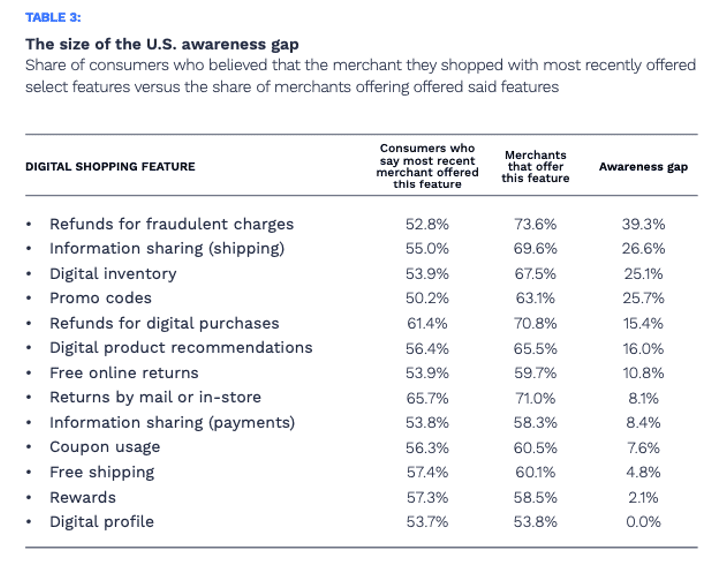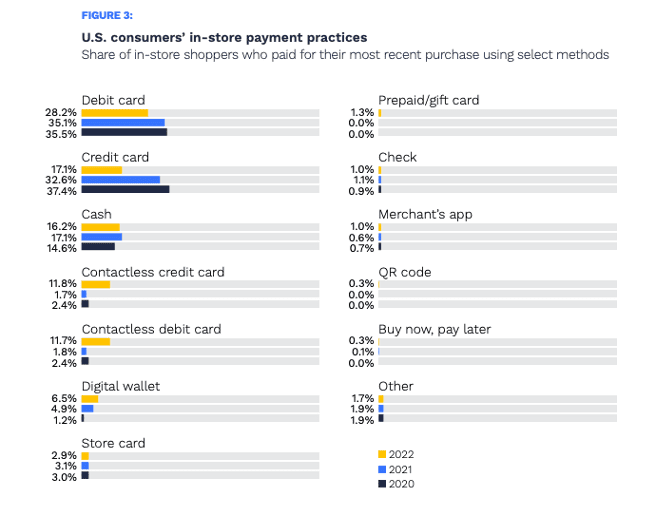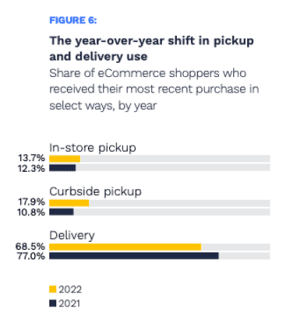
U.S. merchants are at a crossroads, as shoppers seek the digital features and experiences they’ve grown to expect, but often can’t find even when available, creating a satisfaction gap that merchants need to address quickly if they want to retain those customers.
In “The 2023 Global Digital Shopping Index: U.S. Edition,” (GDSI-US) a PYMNTS and Cybersource collaboration taken from a six-nation survey of 13,349 consumers and 3,124 merchants across six key economies, U.S. merchants lost ground between 2021 and 2022 in terms of promoting the presence of features customers most want, even when merchants offer those features.

The data shows that the U.S. is the only country in the six nations studied where consumers “found their shopping journeys more difficult and frustrating in 2022 than in 2021,” as only 87% of shoppers were aware that shopping features they most prize were offered.
In two key examples, free shipping is one of the shopping features of which consumers are relatively unaware, with just 57% of consumers knowing that a merchant offered it, even though 60% of merchants did in 2022. “This misperception is particularly troublesome for merchants because free shipping is at the very top of consumers’ list of priorities.”
Similarly, free returns for online orders are offered by 60% of U.S. merchants, but only 54% of shoppers are aware of it.
Per the study, “Closing this awareness gap is critical for merchants to yield full returns on their investments in digital shopping features, yet merchants are struggling to do so.” The U.S. is the only country in the 2023 GDSI experiencing a feature awareness gap: merchants in other countries greatly reduced their awareness gaps year over year in 2022.

Turning to payments preference, this is the second year in a row that consumers ranked paying with preferred methods as the most important aspect of their shopping journey, especially in-store, where in-store contactless card usage rocketed up 567% year over year, with digital wallet use rising 33% in the same period.
In alternative payment methods like buy now, pay later (BNPL), merchant apps, and QR codes to name a few, 11% of online shoppers paid using one of these methods in 2022, which is another staggering 559% year-over-year increase. It’s also a signal to merchants that they should support these methods.
“Investing in a diverse array of payment choices can help merchants reach this growing cohort of consumers opting for alternative payments,” per the study.

As channels meld, the popularity of picking up online orders is gaining fast, making the U.S. the largest and fastest-growing pickup economy of all countries studied per capita.
We found that 16.4 million eCommerce shoppers (close to one-third of all shoppers) picked up online orders curbside or in-store in 2022. A total of 18% of U.S. eCommerce shoppers picked up their most recent purchase curbside in 2022, “representing a year-over-year increase of 66%. This is six times the growth rate for in-store pickup during the same period. Curbside pickup is now the most common way that eCommerce shoppers in the U.S. acquire their purchases.”
While delivery is still the dominant option for getting online orders, this method slid 11% year over year and is losing ground to order pickup.
Get the study: The 2023 Global Digital Shopping Index: U.S. Edition